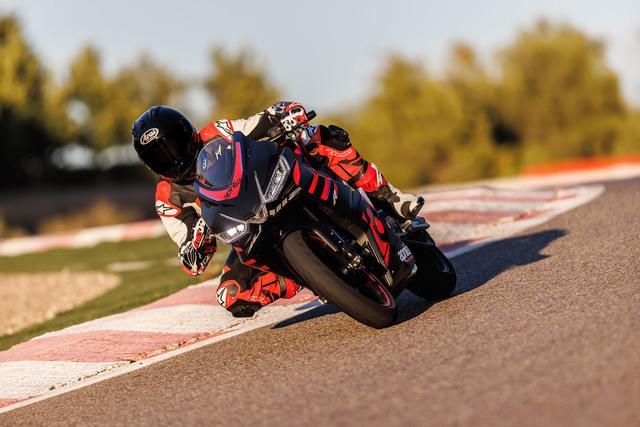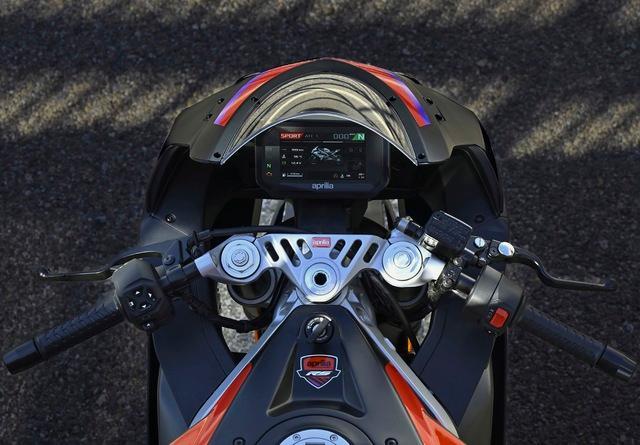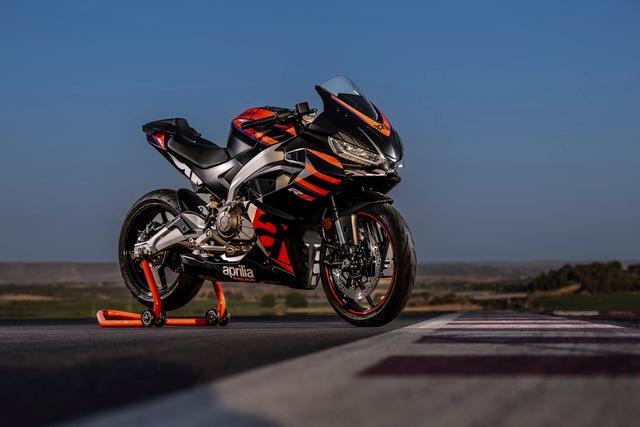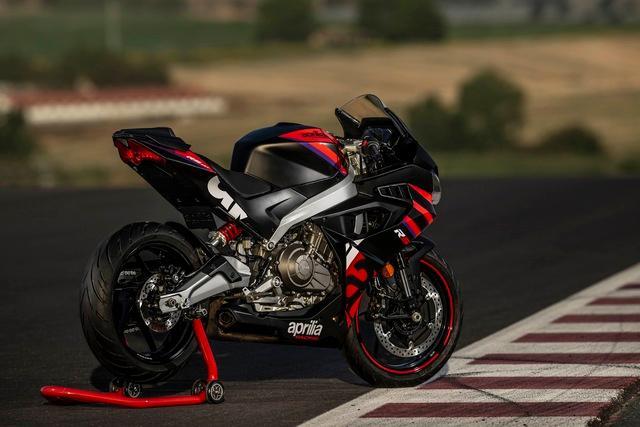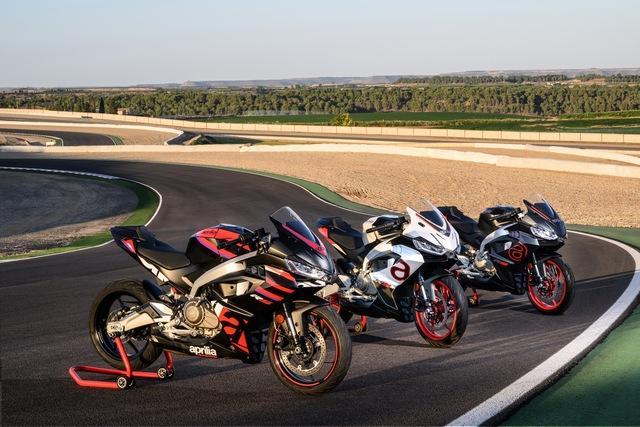A brand that screams sportiness is Aprilia.
The factory Aprilias of Aleix Espargaro and Maverick Vinales, who finished first and second in the GP of Catalonia last Sunday, proved that racing is in the manufacturer Noale's blood.
To capitalize on that sporting triumph, Aprilia releases another model with the RS 457 less than a week later.
The Catalan double was a fortunate coincidence, but the performance on the Misano circuit the day before the San Marino Grand Prix was not.
Even at Aprilia, new sporty models are becoming harder to find, and their presentation can occasionally be "a bit more".
Aprilia's response to the smallest Supersport market is the new RS 457. A straight bull's-eye was and still is Aprilia's RS 660, so they replicated it in Noale with this RS 457.
A sporty aluminum chassis, a parallel dual power source, and a small but effective collection of electronic driving aids make up the well-known and relatively easy to follow recipe.
The Aprilia RS 457 "speaks the language of younger riders who want to step up to a streamlined motorcycle," claims the manufacturer.
The RS 457 was designed and constructed by the manufacturer using all of its skills as a real sports bike.
The motorcycle's low weight, which has the highest power-to-weight ratio for an A2 driving license-compliant motorcycle and makes it simple to operate, is said to be its strongest suit, according to Aprilia.
The RS 457 has been created for usage on both the road and the racetrack. The clip-ons located above the upper triple clamp are notably ergonomic.
It is referred to by Aprilia as a "road sports' solution that offers the best compromise between sporty and comfortable driving."
The new RS 457's design incorporates features from earlier RS models, like the dual front air intakes and the silencer with a 2-in-1 exhaust line that runs beneath the block.
The larger sports bikes from Aprilia have a similar look to the full LED headlight. The headlamp housing incorporates the indicators.
The dashboard is a beautiful and useful 5-inch TFT color screen, and the controls on the steering wheel are lit.
A liquid-cooled parallel twin engine with double overhead camshafts and four valves per cylinder powers the Aprilia RS 457.
With a maximum output of 35 kW (or 48 hp), the Aprilia reaches the utmost limit of power for motorbikes that are compliant with the A2 driving license.
Of course, there is also the motorcycle's weight in addition to its power. It weights 159 kg when empty, and 175 kg when completely loaded with all liquids.
The RS 457's power-to-weight ratio, according to Aprilia, is simply unbeatable because Noale's designers worked tirelessly to maximize its potential.
A rigid frame is connected to the new engine. The RS 457 is distinctive in its market due to the choice of an aluminum frame.
This decision was influenced by the design know-how gained from decades of victories on international circuits.
The RS 660 served as an inspiration for the parallel twin engine, which also serves as a load-bearing component and helps Aprilias achieve their renowned low weight, dynamic capabilities, and driving enjoyment.
The front fork's 41 mm diameter and 120 mm suspension travel may be adjusted for spring preload.
The steel swingarm's monoshock, which is linked to the back, has a spring preload adjustment as well.
130 mm of suspension travel are shown here. A ByBre caliper positioned radially on a single 320 mm brake disc serves as the front brake. A ByBre caliper at the back of the vehicle stops a 220 mm brake disc.
An adjustable two-way ABS system is connected to the brakes. As a result, either both wheels or just the rear are affected by the ABS system.
The front and rear tires on the 17-inch sports rims measure 110/70 and 150/60, respectively. "Perfect dimensions for excellent grip" is how Aprilia describes this.
The Aprilia RS 457s' electronic rider aids were created specifically for a sports motorcycle and with a wide range of audiences in mind.
The Aprilia-invented Ride-by-Wire system regulates the engine with three riding modes that intervene in power and torque delivery as well as traction control. It is used in production machines and the futuristic RS Cube.
The system has three distinct adjustment options, although it can also be turned off. On the list of possibilities is the quickshifter.

